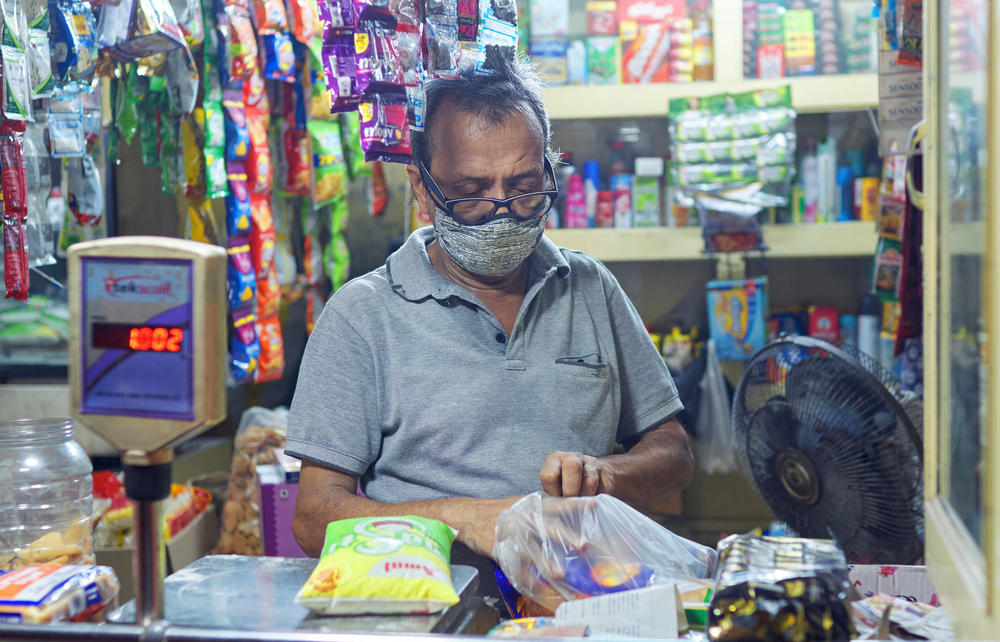
February 9, 2021
Jyothy Laboratories, Marico, Britannia, and Dabur are among the brands that have witnessed significant rural demand.
Sanitizers, ready-to-cook foods, biscuits, oil, luxury skincare, grooming products, and hair oils were greatly demanded.
The implementation of the phygital model can help elevate the sector to greater heights owing to the e-commerce wave.
The streamlining of compliance documents intended for registration and export facilitation is a requirement for growth.

The FMCG sector in India is currently on a growth trajectory characterised by a 25% rise in hiring and a growth in the quantum of distribution and stockist network. This is primarily owing to the volume of rural demand that has risen well in H2 of 2020. The factors that appear to have facilitated this growth include government schemes and reverse migration of a part of the Indian population to their villages. Companies including Jyothy Laboratories, Marico, Britannia and Dabur have reported a rise in demand for products and the creation of strategies to expand to remote regions in the rural ecosystem. Media sources report Marico’s rural trade value to have grown by 24% in the October-December period. The group looks to expand its rural footprint by 20% through an increase in the distribution fleet and a combination of strategies. Ready-to-cook foods produced by entities such as Capital Foods have also seen significant demand in Tier-II and Tier-III cities. Britannia has added 4,000 new rural partners from March-December 2020 thereby raising the count to 23,000. While the space has been experiencing robust demand from the rural ecosystems, there is hope that urban demand would eventually follow suit.
Products in the health and safety category were in great demand in the year 2020 owing to compliance with the safety protocols connected to COVID-19 prevention. As a result, sanitizers and handwash products were among those chiefly demanded. On the edible commodities front, biscuits, potato chips, snack items, oats, noodles, and oil led the way. Beauty and grooming products were yet another category that witnessed increased demand over the quarters as consumers both male and female invested in hair oils, luxury skincare, and hair care products. The festival season that commenced from October -December 2020 saw a rise in consumer spending.
These movements have facilitated the emergence of two diverse brand strategies with regard to product diversification and investment. Certain brands like Dabur India and Marico are considering investing less in the sanitizers and allied product lines owing to general market surplus whereas some others are keen on launching new product lines in the category.
The FMCG space enjoys the benefits of a concrete distribution system and lower operational costs. The sector, however, can scale up to greater heights with the aid of digitisation. It is oftentimes challenging to implement widespread digitisation owing to the varying sizes of businesses spread across geographies. Over the years, brick-and-mortar entities in the start-up space have adopted a phygital model wherein the entity’s physical presence has been complemented by a digital presence. This model can be implemented on the basis of the size of the business venture. If this is not possible owing to business size and revenue, partnership with hyperlocal concierge services present another possibility.
Experts reveal that sectoral stability is contingent on government spending on infrastructure, agriculture, rural development, and the power sector. On the compliance front, it has been documented that entities are often promoted with multiple frameworks of registration and licensing. As this can prove to be a major bottleneck, there is also scope to ensure uniformity in the registration and export processes across various States in India. Attending to these hurdles and tackling them creatively can encourage greater participation from aspiring entrepreneurs across the nation.
The COVID-19 pandemic has significantly shifted the methods by which individuals interact with the FMCG space. As safety protocols will continue to be maintained well into 2021, the FMCG space will have to adopt stricter sanitisation procedures so as to continue keeping illness at bay. WhatsApp could be used as a tool to keep the customer base informed of the inventory status quo such that informed decisions pertaining to purchases can be made. In terms of product line-up, local FMCG entities could consider including niche products in the skincare and grooming so as to cater to the needs of their customers. As the sector at large continues on its path towards economic recovery, patterns of demand, last-mile connectivity, and the removal of operational and policy bottlenecks can expect to contribute positively to this trajectory.